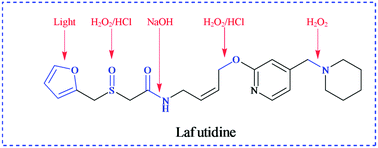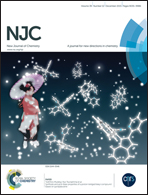Forced degradation of lafutidine and characterization of its non-volatile and volatile degradation products using LC-MS/TOF, LC-MSn and HS-GC-MS
Abstract
Lafutidine was subjected to forced degradation under hydrolysis, oxidation, thermal and photolysis conditions, in accordance with ICH guidelines Q1A(R2) and Q1B. Thirteen non-volatile and one volatile degradation products (DPs) were formed under different stress conditions. Among them, DPs IV, V, VII and IX were formed under acidic stress conditions, while DPs I, X and XIII were formed under basic stress conditions. Oxidative stress resulted in the generation of DPs II, III and VI. DPs XII and XIII were formed under photoacidic conditions, while DPs VIII and XI were formed under both photoacidic and photoneutral conditions. The single volatile DP was formed only under acidic stress. In order to characterize the non-volatile DPs, the complete mass fragmentation pathway of the drug was established with the help of MS/TOF and MSn studies, followed by LC-MS/TOF and on-line H/D exchange experiments. Twelve out of thirteen non-volatile DPs were characterized successfully. The structure of DP-I could not be elucidated, as it did not ionize in both ESI and APCI modes. The lone volatile DP was characterized using GC-MS data and correlation with mass information in NIST library. Finally, the degradation pathway and mechanisms for the formation of the DPs were postulated.


 Please wait while we load your content...
Please wait while we load your content...